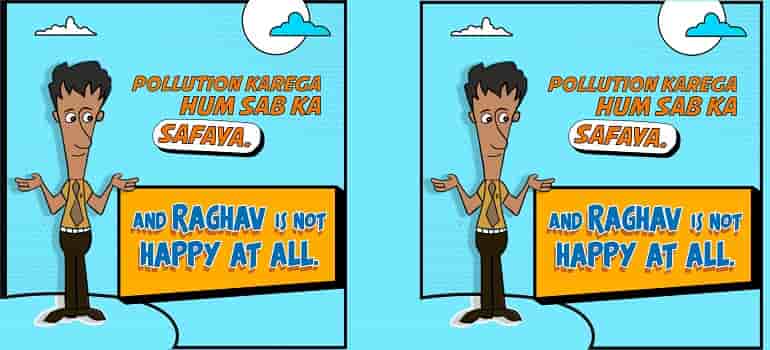
India Climate Collaborative (ICC) along with Asar, has come up with five small animation films to improve awareness about the menace of air pollution and its impact on human health.
Three quirky school-going friends get together to dispel myths on air pollution & explore sources, health impacts, & solutions through a series of five films.
Kanchan, Saira & Raghav are fast taking over social media as well as online classrooms as they dole out information on air pollution with a fusion of humour laced with research-backed information.
These three are young school-going characters from a recently released series of short animated videos, which detail a spread of topics on air pollution, including sources, impacts on health, and solutions.
Capturing the attention of the super savvy 6 to 18-year-old young adults, as well as their teachers, parents, friends, this set of 5 animated films, tells the story of these three characters- Kanchan, Saira and Raghav as they embark on their journey to learn more about the evil of air pollution, and how they muster up the courage and responsibility to come up with solutions.
These 90-second to 140-second films, created by Asar with support from India Climate Collaborative (ICC), are currently being circulated in three languages- a combination of English & Hindi, Marathi, Punjabi, and are in process of being dubbed into Tamil among other regional languages.
“Worsening air quality is a severe problem across India but it’s not accessible to everyone. It’s often technical and uses acronyms and jargon. These videos, cut through the haze and deliver whats essential.,” said Brikesh Singh, Director (Communications & Engagement), Asar.
Singh added that there is a huge vacuum in this space where people, especially children, are unable to understand how poor air quality affects health. “Thus it was our attempt to develop these unbranded and freely available films for anyone to use as part of their educational programs, campaigns, and other communications to amplify conversations on air pollution,” he said.
Clean air is a basic human right, and these videos are being actively shared on social media by state governments, municipal bodies, academicians, school/college networks, philanthropists, NGOs, and influencers.
Isha Chawla, Communications, India Climate Collaborative said the idea is to break down the complex issue of air pollution in an easy-to-understand, accessible format. “There is a lack of a strong, cohesive narrative focused on the solutions to air pollution. To enable this, we realised it’s essential to support the creation of open-source tools like these videos,” she said.
These videos, which were released on January 22, have already received over 12,000 views across social media platforms. The films have been shared by the Early Childhood Association. They are a self-governing organisation of over 23,000 schools and pre-schools in the nation, formed by educationists and school administrators. The films have been shared to all of their network’s schools to show students.
The Maharashtra Environment & Climate Change Department, which last year launched its Majhi Vasundhra (MyEarth) Climate Curriculum for schools, published the Marathi versions of these films across its social media channels.
“These films are a good initiative as they enlighten the youth at a very early age, and improvement in air quality becomes a priority. As a result, it becomes ingrained in their (children’s) way of life as they get older,” said Ashok Shingare, Member Secretary, Maharashtra Pollution Control Board, adding that this was an effective step toward teaching children about two of the most pressing challenges we face today: air pollution and health.
Several educational institutes across key metropolitan cities such as New Delhi, Mumbai, Bengaluru and Kolkata as well states like Punjab, Jharkhand, Maharashtra, have commenced presenting these films on both online and offline channels.
“I was impressed with the short video clips as it allows the visual and auditory learners in our students to process more effectively with a strong recall. It is very beneficial for students to process information in their own natural way. Youngsters influence their own families and will surely push awareness for such important subjects which finally sustain our living as human beings,” said Francis Joseph, Director, School Leaders Network (SLN) Foundation

